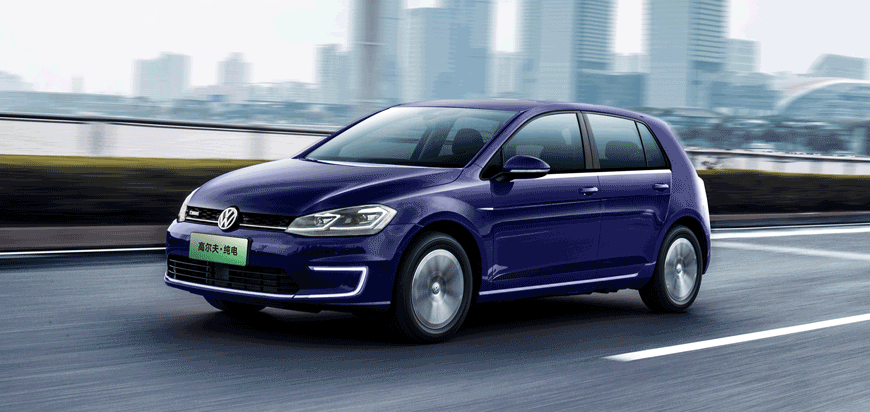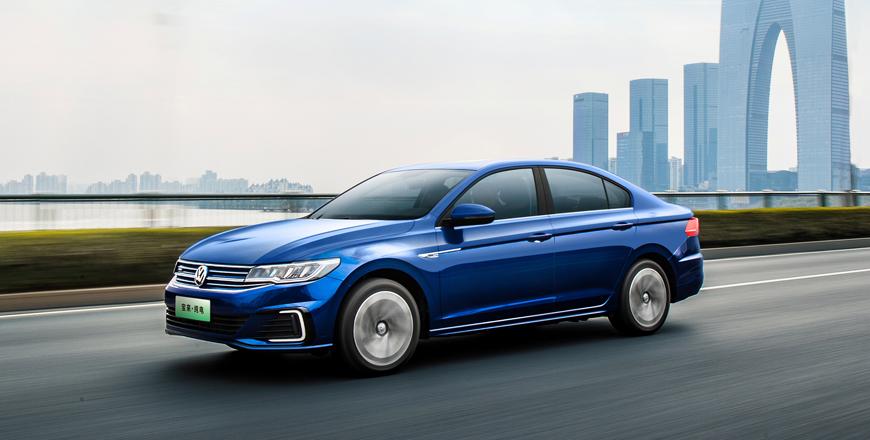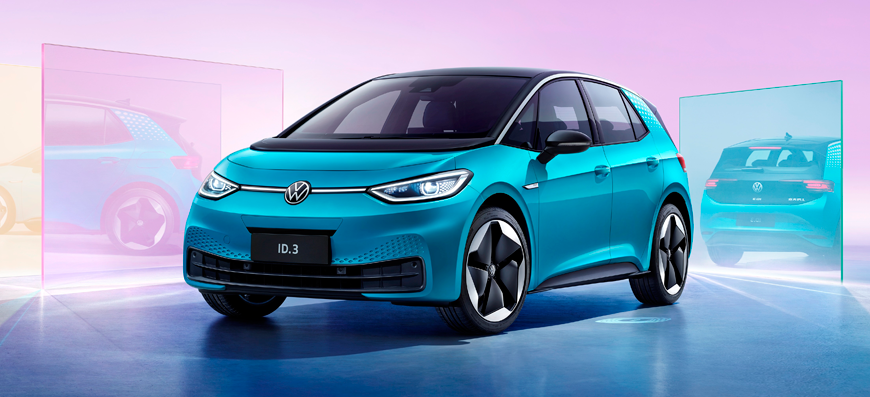You are here
Volkswagen e-Golf: A reassuringly familiar and more conventional EV
By Ghaith Madadha - Jan 02,2023 - Last updated at Jan 02,2023

Photo courtesy of Volkswagen
A popular independent market import rather than official dealership model, the Chinese-built electric Volkswagen e-Golf version of the seventh generation of the German brand’s most defining modern model continues even as a new eight generation entered service.
Revised rather than retired in the same year — late 2019 — as the mk8 was introduced, the updated mk7 Chinese e-Golf remains one of the more aesthetically appealingly discrete and ‘normal’ EVs widely available in Jordan, and is all the better for its improved power and driving range.
Improved in performance and efficiency but otherwise near identical to the outgoing variant, the e-Golf meanwhile maintains the handsomely conservative yet subtly sporty demeanour and uncluttered sense of design clarity that the mk7 introduced when first launched back in 2012. Perhaps something of an EV for car buyers who do not like EVs, or at least not the often extravagant and sometimes downright “odd” designs, attention-seeking style or virtue-signalling badges and detailing of many modern electric-powered cars, the e-Golf has a reassuring sense of familiarity.
Classy and conventional
Little distinguishable from the regular combustion engine mk7 Golf and sharing the same clean and sharp design ethos, big glasshouse, and understated sense of momentum, the e-Golf’s differs with it discreet badges, blocked off and purely decorative integrated rear “exhaust” ports and C-shaped LED lighting framing its front fascia.
The e-Golf’s differing radiator shutter and grille, and flush alloy wheels — shod with low rolling resistance tyres — are perhaps the biggest EV drive-line giveaways, which along with underbody panels go towards achieving a low 0.27 drag co-efficiency.
Built on Volkswagen’s highly capable MQB platform underpinning the mk7 generation Golf, but adapted for EV duty, the e-Golf shares a similarly conventional front motor and front-drive layout with batteries located at the rear, rather than Volkswagen’s similarly sized but dedicated rear engine ID.3 hatchback, with its under-floor batteries.
Built using increased lightweight aluminium content as all mk7 Golfs, the e-Golf’s heavy batteries — estimated at around 350kg — make it even heavier than the powerful outgoing mk7 four-wheel-drive Golf R, at a hefty 1,580kg.
Improved output
Never a particularly brisk machine to be compared to hot hatch Golf R or GTI variants, the revised e-Golf’s output has been usefully bumped up from 115BHP to 134BHP, while torque rises from 199lb/ft to a more generous 214lb/ft.
Though marginally heavier, the improved e-Golf’s output increases translate into performance gains. With quicker 9.6-second 0-100mkm/h acceleration, over the outgoing model’s 10.4-seconds, and a 10km/h top speed rise to 150km/h, the e-Golf easily exceeds national speed limits and is adequately quick for an eco-oriented EV family hatchback.
With a near instant torrent of torque on tap, the e-Golf’s is responsive from standstill, chirping its driven front wheels and progressing with confident versatility at moderate speeds.
Driven through a single-speed automatic gearbox, the e-Golf’s uninterrupted acceleration is always contingent on its high-revving motor’s speed, with its rate of acceleration dropping off somewhat at higher speeds of travel. Relying more on torque that outright power, the near silent driving e-Golf is, meanwhile, confident on inclines and when carrying heavy loads.
Comfortable character
Most efficient and with driving range at its best in urban in driving, in contrast to combustion vehicles that are best on motorways, the revised e-Golf features improved 35.8kWh battery capacity and longer single charge range, increased from 133km to 190km.
Charging through a variety of wall chargers or conventional wall plugs in between 5-hours, 15minutes to 16-hours, 30-minutes, the e-Golf can be charged by a fast high capacity charger in 36-minutes at best, where available.
Manoeuvrable and compact yet practical, refined and reassuring, the e-Golf works well as a commuter car, if not long distance tourer, where it is hindered by range and charging time. With light steering, good visibility and compact dimensions, the e-Golf is meanwhile easy to park. Its driving character and dynamics are similar to petrol-powered variants, with quick and direct steering, confident cornering, and motorway stability. The e-Golf’s regenerative lift-off braking is however the biggest difference in driving character style.
Smooth and silent
Reminiscent of combustion engine sisters, the e-Golf turns into corners with similar agility and response, if slightly more tendency for understeer and body lean, owing to a combination of a more forgiving ride, slimmer 205/55R16 tyres and heavier weight than sportier GTI and R variants previously driven.
Instant and abundant torque also translates into slight torque steer if one comes back on power hard and early when exiting a tight corner. That said, it finds a good balance between ride comfort and body control, and is smooth, stable and comfortable.
Well insulated, well built and refined, the e-Golf’s cabin is classy, conventional and user-friendly, if not quite luxurious. It provides a supportive, comfortable and well-adjustable driving position, clear instrumentation and controls, comparatively good cabin room and above average visibility.
Luggage room is reduced owing to under-boot batteries, but still adequate at 341-litres, to 1,231-litres with the seats down. It is also reasonably well equipped with safety, convenience and infotainment features, including reversing camera.
Though not licensed to sell new, the local official Volkswagen dealership is however reassuringly certified to service the e-Golf.
TECHNICAL SPECIFICATIONS
Engine: Synchronous AC permanent battery, front-mounted electric motor
Battery, voltage/capacity: Lithium-ion, 325V/35.8kWh
Gearbox: 1-speed automatic, front-wheel-drive
Power, BHP (PS) [kW]: 134 (136) [100]
Power-to-weight: 84.8BHP/tonne
Torque, lb/ft (Nm): 214 (290)
Torque-to-weight: 183.5Nm/tonne
0-100km/h: 9.6-seconds
Top speed: 150km/h
Range, EVBD (NEDC) [WLTP]: 190km (300km) [232km]
Fuel consumption equivalency EVBD (NEDC) [WLTP]: 1.9- (1.4-) [1.7-] litres/100km
Charging time, wall chargers and plugs/fast charge: 5h15m-16h30m/36m.
Length: 4,267mm
Width: 1,799mm
Height: 1,479mm
Wheelbase: 2,631mm
Ground clearance: 143mm
Headroom, F/R: 975/967mm
Legroom, F/R: 1,046/903mm
Shoulder room, F/R: 1,420/1,370mm
Luggage volume, min/max: 341-/1,231-litres
Kerb weight: 1,580kg
Payload: 480kg
Steering: Electric-assisted rack & pinion
Lock-to-lock: 2.76-turns
Steering ratio: 13.6:1
Turning Circle: 10.9-metres
Suspension: MacPherson struts,/multi-link, anti-roll bars
Brakes: Ventilated discs
Tyres: 205/55R16
Related Articles
The electric powered incarnation of Volkswagen’s defining modern model, the e-Golf is a familiarly discrete, handsome, classy and practical
A recent and gradually more popular arrival to the Jordanian market, the Volkswagen e-Bora follows in the footsteps of the prolific seventh
Launched in Europe in 2019 with Chinese market variants soon following in 2021, the Volkswagen ID.3 is the German manufacturer’s purpose-bui


















